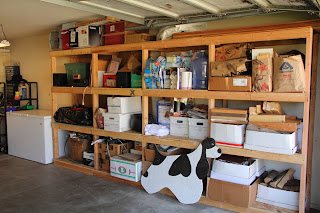Spring cleaning is right around the corner. If you are like most Americans you have accumulated quite a lot of “stuff” over the winter months and the holidays. The newer, shinier and sleeker stuff probably has displaced the older, yet still good “stuff” that you are still very fond of and are not quite ready to ship out or get rid of.
When it is all said and done we Americans accumulate a lot of “stuff.” Our homes can only handle a fixed amount of this “stuff” before it becomes a mess or potentially a fire hazard. We like our “stuff” and we hesitantly get rid of it. Cyndy Salzmann, 'The Clutter Coach,' states “If you don’t love it or use it….lose it!” But let’s face it; we seem to love all of our “stuff.”
The good news is that as we accumulate all of our “stuff” we can live out our normal, structured lives if we learn to keep our “stuff” somewhat organized.
The two most popular and least costly means to add structure to the mounds of “stuff” are to add storage shelving and/or storage shed. Many will opt for the rented storage units instead of building or purchasing an on-premise storage shed but the concept is the same, it’s just a convenience and cost issue.
 Adding that extra storage space could be as easy as purchasing and installing a heavy-duty shelving unit or having one custom tailored for a particular spot in the basement or garage. The pull-down attic ladder with planking and shelving installed in that unused area is the most requested storage option we have accomplished. The long-term costs are favorable compared to renting an off-premise storage unit. Oh, and maybe some focus on pairing down on how much “stuff” we think we need to retain.
Adding that extra storage space could be as easy as purchasing and installing a heavy-duty shelving unit or having one custom tailored for a particular spot in the basement or garage. The pull-down attic ladder with planking and shelving installed in that unused area is the most requested storage option we have accomplished. The long-term costs are favorable compared to renting an off-premise storage unit. Oh, and maybe some focus on pairing down on how much “stuff” we think we need to retain. 









